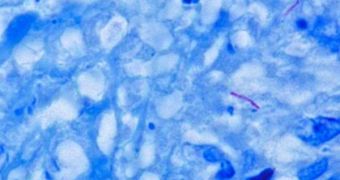New investigations have revealed an amazing fact about a large number of pathogens – bacteria, microbes and viruses – they carry within them tools that destroy them, and we can make use of them. The find, made by experts at the Flanders Institute for Biotechnology (FIB) Department of Molecular and Cellular Interactions, may help health experts devise new methods of attacking and killing pathogens in the future, which will rely on blowing them up from the inside, rather than attacking them from the outside.
Details of the work have been accepted for publication in the upcoming issue of the top scientific journal Molecular Cell, and the editorial board, in a rare move, expressed its congratulations to the team behind the find. Team leaders Nathalie De Jonge and Remy Loris have attempted to decipher the intricate workings behind the toxin-antitoxin complex for years, and have efficiently directed their colleagues onto the right path. In the past, very few experts dedicated their time to studying this complex.
A shift in interest for the new field has been recorded in recent years, when many scientists have begun to notice it, and a number of papers on the theme has been published as a result. The toxin-antitoxin (T-A) system, the team explains, is the bacterium's way to protect itself from any damage that may come to its DNA. Unlike humans, whose genetic data are stored in about two-meter-long DNA strands, the bacteria only rely on one millimeter, so preventing any harm from coming to it is crucial for their survival.
The T-A gene is the target that the experts want to attack. If they manage to destroy it, then the equal production of toxins and anti-toxins would end. But, in bacteria, antitoxins break up faster than toxins, and are more efficiently collected by the clean-up mechanisms of the cell. This means that sufficient amounts of toxins would be left inside the cell to kill it, after the clean-up process starts. Consequently, the focus of pathogen research can now be shifted from destroying membranes to annihilating genes.

 14 DAY TRIAL //
14 DAY TRIAL //